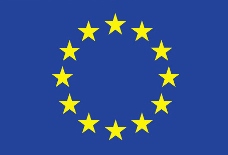Research
Expa-N
The discovery of comammox Nitrospira represents a new paradigm in nitrification. Using rapid sand filters as a model system, this project aims to understand the ecology and niche space of nitrifiers, including comammox Nitrospira. This project further aims to develop an understanding of the physiology and metabolism of comammox Nitrospira and the evolutionary history of the comammox pathway using genomic and traditional microbiological methods.
Specifically, we are making efforts on enrichments and isolation of different nitrifiers including comammox Nitrospira. We are also studying the microbial competition and interactions in nitrifying systems under different environmental conditions. Additionally, by using omics-based approaches, we are investigating the comammox microdiversity observed in this studied system.
Funded by: The Villum Foundation.

P-TransPlant
Horizontal gene transfer (HGT) has played as a crucial role in conferring formidable adaptability to microorganisms under stressful environmental conditions, especially the global proliferation of antibiotic resistance. P-TransPant, aims to open a brand-new horizon for understanding HGT in microbial communities of urban wastewater system and evaluating risk of HGT associated antibiotic resistance dissemination.
Funded via the People Programme (Marie Curie Actions) of the European Union's Seventh Framework Programme (FP7/2007-2013) under REA grant agreement number 609405 (COFUNDPostdocDTU).

P-PhanFARE
The epidemic spread of antibiotic resistance is facilitated by the transfer, from antibiotic-resistant bacteria to antibiotic-sensitive bacteria, of genetic elements called conjugal plasmids that carry resistance genes. Wastewater contains many bacteria carrying these plasmids but we lack sustainable options to eliminate them. Bacteriophages, viruses that infect bacteria, exist that selectively target conjugal pili, appendages only present in plasmid-carrying cells. These phages are not well studied in an ecological context and their potential to interfere with gene transfer in microbial communities has not been assessed, nor exploited. In P-PhanFARE, we will develop and evaluate a unique biocontrol concept using these bacteriophages to target the plasmids responsible for the epidemic transfer of resistance genes.
Funded by: The Villum Foundation.

BioCAT
With the BioCAT project, we are seeking for microbes that are able to harvest electrical energy. BioCAT aims to cultivate novel electrogens from different environments using aerobic and anaerobic biocathodes at different poised potential and to discover novel electron transfer pathways using metagenomics and metatranscriptomics.
Funded by: The Novo Nordisk Foundation


In DARWIN (Dynamics of Antimicrobial Resistance in the Urban Water Cycle in Europe), we postulate that urban water systems (UWS), which are our receptacle for excreted antimicrobials, AMR organisms and AMR genes, are central conduits of AMR to and from pathogens and environmental strains. We will undertake a pan-European examination of the fate of key AMR organisms and genetic determinants in UWSs resulting from discharged hospital and community wastes, including transmission mechanisms in different compartments of sewer catchments and receiving waters. We will determine specific bacterial hosts that carry AMR genes across UWSs, and identify where key HGT events occur with the ultimate goal of assessing the relative risk of AMR genes returning back to humans due to environmental exposure. A predictive dynamic mathematical model for UWSs will be developed to assist in health and sewage management decisions.
In collaboration with: Univ. of Copenhagen (S.J. Sørensen); Newcastle Univ. (D. Graham); Univ. of Birmingham ( J.U. Kreft); Univ. Santiago de Compostela (J.L. Romalde); Univ. Hospital Complex of Santiago de Compostela (C. Garcia-Riestra); Rambam Health Care Campus (M. Paul).
Funded by: Joint Programming Initiative - Antimicrobial Resistance


SandBAR (Strategies and Barriers to avoid the spread of Antibiotic Resistance genes during wastewater treatment) will investigate how plasmids and genes encoding antimicrobial resistance (AMR) spread, persist, or are eliminated from wastewater treatment plants (WWTPs) and how this affects their accessibility to pathogens. We will identify traits of the WWTP microbial communities that promote horizontal gene transfer and the spread of AMR genes. SandBAR will reveal microbial groups and mobile genetic elements that facilitate spread of AMR traits from and to human pathogens, and identify WWTP conditions and configurations that mitigate transfer. SandBAR aims to provide a critical contribution in evaluating the potential burden or mitigation opportunities of wastewater treatment towards AMR dissemination.
In collaboration with: Univ. of Copenhagen (S.J. Sørensen)
Funded by: the Danish council for independent research

Magpi
The use of MAGnetic bacteria for inorganic Phosphate recovery from Impaired waters.
Can we use magnetotactic bacteria (MTB) for phosphate (P) recovery, taking advantages of the fact that they are selectively harvested using magnetic force? P is required as a fertilizer for food production and derives from mined rocks. Scientists estimate accessible, high-grade P will be depleted within 50 years. The natural P biogeochemical cycle is out of balance, leading to eutrophication. There is an urgent need for sustainable sources of P. Attention has been given to biological P recovery from wastewater by means of poly-P accumulating organisms, where biomass is removed by settling, which is an uncontrolled process. MTB are found in natural aquatic systems. Intracellular magnetic structures function as compass needles allowing MTB to migrate across oxic-anoxic interfaces using Earth´s geomagnetic field lines. The ability of MTB to store poly-P has been described. Yet, their metabolic lifestyle, the mechanisms and controls of P storage are unresolved. This project will identify, culture and characterize MTB with P accumulating abilities with the ultimo goal to investigate the ability of MTB to sequester and store P from wastewater.
Funded by: The Villum Foundation.

Previous Projects

Mermaid was a European network formed to train promising young researchers to describe and control the microbial communities central to the treatment of residual water and the production and distribution of drinking water. This project, funded by the European Union through the Marie Slodoska Curie Actions, and which we coordinated, is no longer active but the website remains available here.

LaGas was a DSF funded Research Project and consisted of a highly interdisciplinary and engaging consortium with both national and international scientific partners as well as industrial partners and end-users. The project was led by the Department of Environmental Engineering at the Technical University of Denmark (DTU) (DTU Env) with Prof. Barth F. Smets as the project manager. The Management Board contained members from the Department of Environmental Engineering (DTU Env), Department of Chemical and Biochemical Engineering (DTU), University of Southern Denmark, Krüger A/S, Veolia Water, Unisense A/S and Copenhagen Wastewater Innovation.
The project is no longer active but the website with more detailed information remains available here.

Diagnostics and management of nitrous oxide production and emission during biological wastewater treatment
Emissions of N2O from wastewater treatment plants (WWTPs) are of growing concern. The results of this project improved our fundamental understanding of the mechanisms and regulation of N2O production during biological wastewater treatment by using a combination of biogeochemical (including stable isotope based (15N, 18O) methods) and molecular ecological approaches (including omic methods). Combined with on-line sensor measurements at lab-scale Partial Nitritation and Partial Nitritation-Anammox bioreactors, the project provided detailed, mechanistically-founded insight to how we can predict and control N2O emissions, so that effective management strategies could be derived to ensure that WWTPs control their nitrogen (N) load to both the atmosphere and the aquatic environment.
